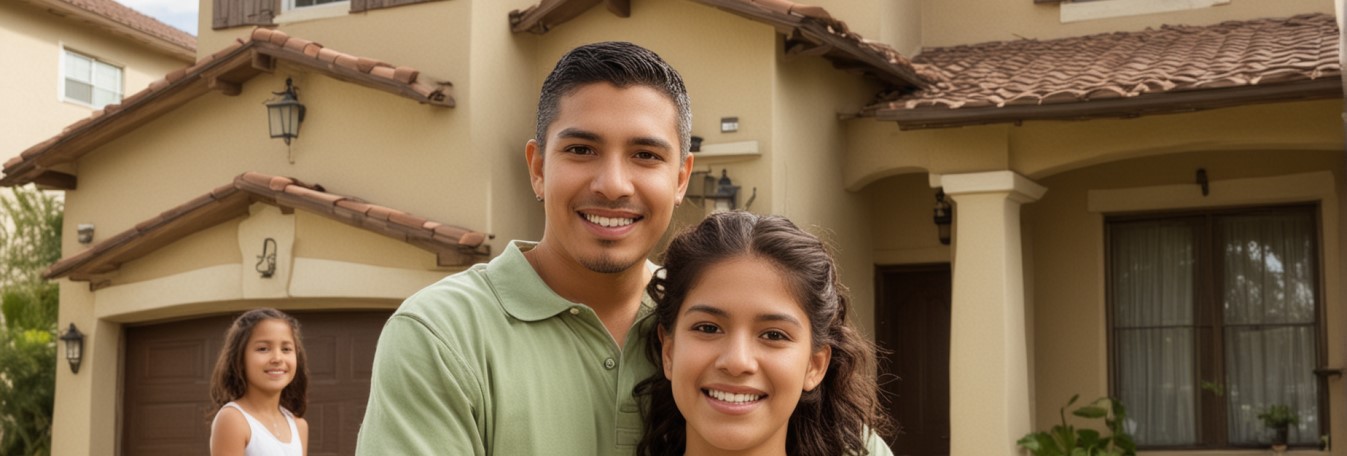Home Ownership Rates Growing for Minorities: Understanding the Trend and Implications
The landscape of homeownership in the United States has been evolving, with notable increases in ownership rates among minority groups over recent years. This shift marks a significant departure from historical trends and reflects changing demographics, economic factors, and policy initiatives aimed at promoting inclusive homeownership opportunities. In this article, we'll explore the reasons behind the growing homeownership rates among minorities, the challenges they still face, and the broader implications of this trend.

Historical Context
Historically, minority groups in the United States, particularly Black and Hispanic communities, have faced systemic barriers to homeownership. These barriers include discriminatory lending practices, redlining policies that restricted access to mortgage credit in certain neighborhoods, and economic disparities affecting wealth accumulation and financial stability. As a result, homeownership rates among minorities have historically lagged behind those of White households.
Recent Trends and Data
In recent years, there has been a noticeable increase in homeownership rates among minority groups, reflecting broader socioeconomic changes and targeted efforts to expand access to housing finance. According to data from the U.S. Census Bureau and other sources:
- Black Homeownership Rates: Black homeownership rates have shown modest gains, with the rate increasing from a low of around 41% in 2016 to approximately 44% in recent years.
- Hispanic Homeownership Rates: Hispanic homeownership rates have also seen growth, reaching levels above 48% in recent years, up from around 45% a few years ago.
- Asian and Other Minority Groups: While data specific to Asian and other minority groups vary, there has been a general trend of increasing homeownership rates across these demographics as well.
These trends indicate progress in closing the homeownership gap between minority and White households, albeit at a gradual pace.
Factors Driving Increased Homeownership Rates Among Minorities
Several factors contribute to the growing homeownership rates among minority groups:
1. Economic Recovery and Job Growth: The overall economic recovery following the Great Recession has contributed to improved employment opportunities and income growth among minority communities, enhancing their ability to save for down payments and qualify for mortgages.
2. Affordable Housing Initiatives: Federal, state, and local governments, as well as nonprofit organizations and community development financial institutions (CDFIs), have implemented programs aimed at expanding affordable housing options and providing down payment assistance to low- and moderate-income households.
3. Cultural Shifts and Generational Trends: Younger generations within minority groups are increasingly entering the housing market, driven by changing attitudes towards homeownership and the desire to build wealth through real estate investment.
4. Financial Education and Counseling: Increased access to financial education and counseling services has empowered minority households to better understand the homebuying process, improve their credit profiles, and navigate mortgage financing options.
5. Policy and Regulatory Changes: Legislative and regulatory changes, such as updates to fair lending laws and initiatives to combat housing discrimination, have helped mitigate some of the barriers historically faced by minority homebuyers.
Challenges and Barriers
Despite the progress, challenges persist that continue to affect minority homeownership rates:
1. Wealth Disparities: Racial and ethnic wealth disparities remain significant, with minority households often facing higher rates of income inequality, limited access to generational wealth transfer, and lower levels of accumulated savings for down payments.
2. Credit Access and Mortgage Approval Rates: Minority borrowers still encounter challenges in accessing mortgage credit, including higher denial rates and disparities in loan pricing and terms compared to White borrowers with similar credit profiles.
3. Affordable Housing Shortages: Many metropolitan areas, particularly those experiencing rapid economic growth, face shortages of affordable housing options, which disproportionately impact minority households with lower incomes.
4. Discriminatory Practices: Despite legal protections, discriminatory practices in housing and lending continue to pose barriers to minority homeownership, including steering practices, differential treatment in loan pricing, and disparities in property appraisals.
5. Gentrification and Displacement: Gentrification in urban neighborhoods can lead to displacement of longtime residents, including minority homeowners, as property values and rents rise beyond their means.
Addressing these challenges requires comprehensive efforts from policymakers, lenders, community organizations, and stakeholders across the housing industry to ensure equitable access to homeownership opportunities.
Implications of Growing Minority Homeownership Rates
The increasing homeownership rates among minorities have significant implications for individuals, communities, and the broader economy:
1. Wealth Building and Asset Accumulation: Homeownership remains a critical pathway to wealth building and asset accumulation for minority households, providing a means to build equity, access affordable housing, and pass down wealth to future generations.
2. Strengthening Communities: Homeownership promotes community stability and civic engagement, fostering neighborhood pride, social cohesion, and economic resilience.
3. Economic Growth and Stability: A higher rate of minority homeownership contributes to overall economic growth by stimulating housing-related industries, creating jobs, and generating tax revenue for local governments.
4. Reducing Wealth Disparities: Closing the homeownership gap between minority and White households can help reduce racial and ethnic wealth disparities over time, promoting economic equity and social justice.
5. Policy and Market Implications: Policymakers and industry stakeholders must continue to prioritize efforts to expand homeownership opportunities, address systemic barriers, and promote inclusive housing policies that benefit all Americans.
Conclusion
The growing homeownership rates among minority groups in the United States represent a positive trend towards greater inclusivity and economic empowerment. While progress has been made, challenges persist that require concerted efforts from policymakers, lenders, and community advocates to ensure equitable access to housing opportunities. By addressing systemic barriers, promoting financial education, and fostering supportive housing policies, we can continue to expand homeownership opportunities for all Americans, thereby strengthening communities and promoting long-term economic prosperity. As we look towards the future, sustaining this momentum will be essential in achieving a more equitable and inclusive housing market for generations to come.
